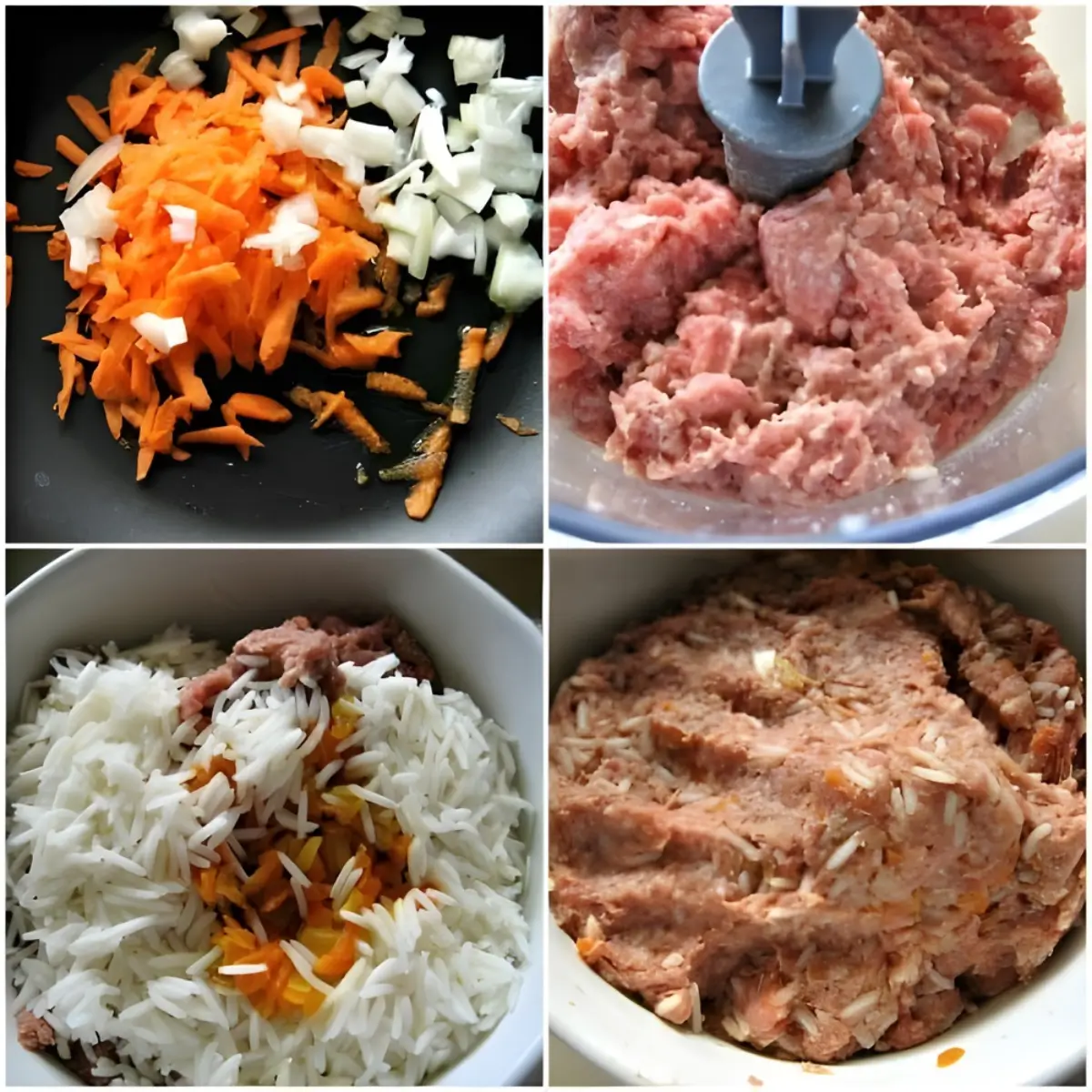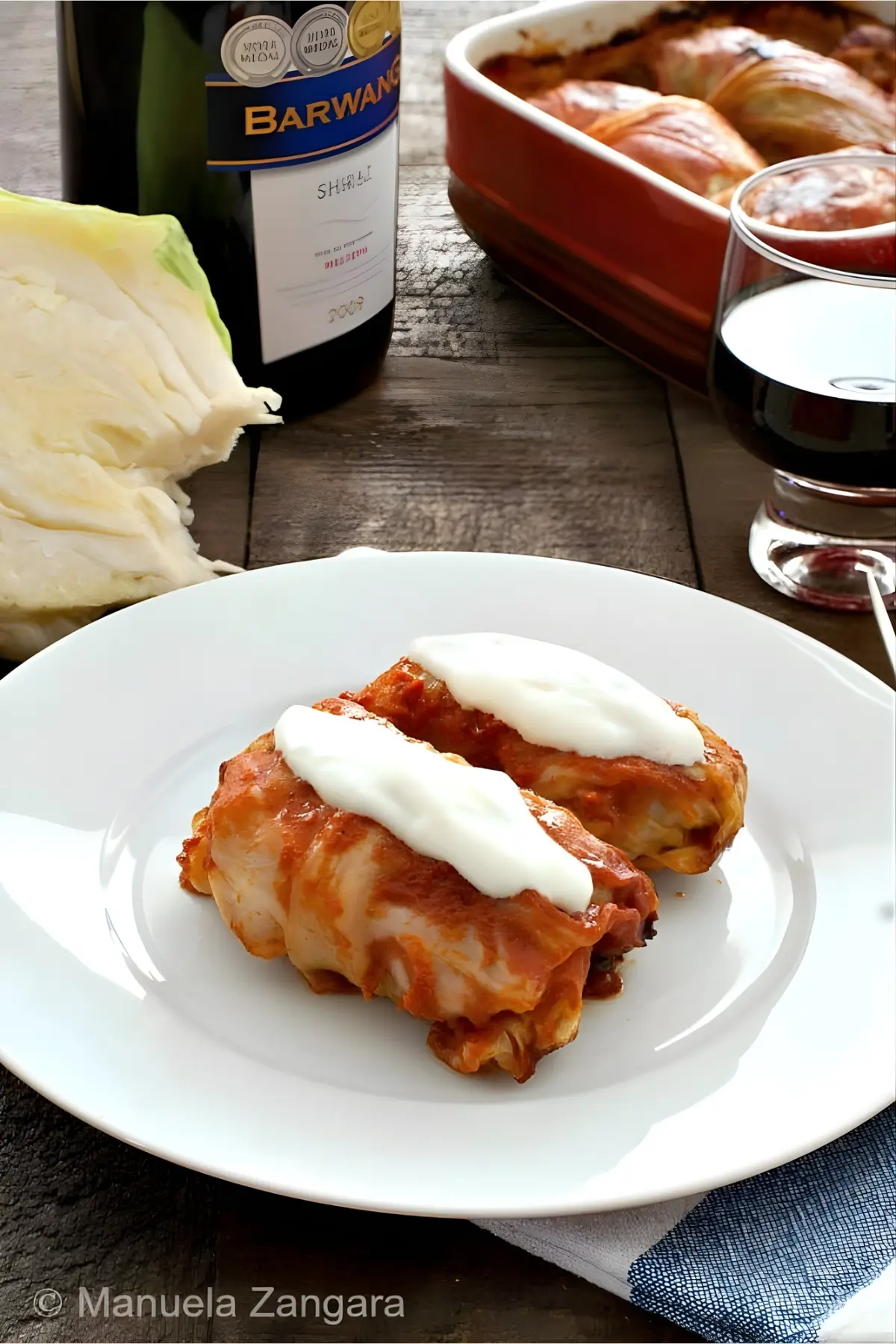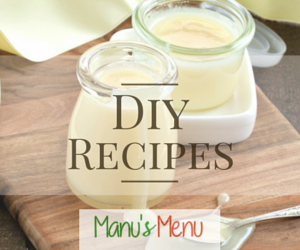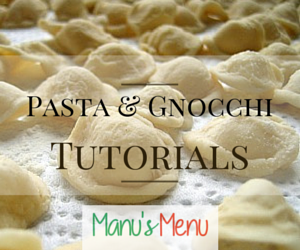Rolled, sauced and baked until tender and flavourful, these homemade Cabbage Rolls turn simple ingredients into a dish that tastes rich, comforting and truly satisfying.

November’s Daring Cooks’ Challenge introduced a new dish to my kitchen. Olga from Effortless Lessly shared her Ukrainian-style stuffed cabbage rolls filled with meat, fish, or vegetables and encouraged everyone to bring their own twist to the recipe.
It was my first time making cabbage rolls, and I was pleasantly surprised by how manageable the process was once I began. The flavours turned out rich and comforting, and I finally understood why this dish is so beloved across Eastern Europe. Soft cabbage leaves wrapped around a savoury filling and simmered in tomato sauce made a meal that felt warm and satisfying.

There were a few small challenges along the way. Cabbage was difficult to find during summer, and I could only buy halves, which made rolling trickier than expected. I also left them in the oven a little too long, so they ended up drier than I hoped. Still, the experience taught me a useful new method for softening and separating cabbage leaves, a technique I’ll definitely use again.
These Ukrainian cabbage rolls are rich in flavour and tradition, and I’m glad this challenge gave me the chance to learn something new while making a dish worth returning to.
What Makes These Cabbage Rolls Worth Trying
- Works well in every season, from a warm winter dinner to a hearty autumn meal.
- Layers of savoury meat, tender cabbage, and rich tomato sauce blend into a balanced, flavourful dish.
- Pairs easily with potatoes, bread, or salad to make a full and satisfying meal.
Key Ingredients for Cabbage Rolls
Green Cabbage
Look for a compact head with wide, tender leaves that separate cleanly. Once softened, the leaves take on a delicate sweetness and a pleasant bite, wrapping the filling snugly without breaking apart.
Onions and Carrots
Add a subtle sweetness and a light earthy note to the filling. Their natural flavours blend with the meat and rice, creating a well-rounded taste and a soft, pleasant texture inside each roll.
Tomato Purée or Paste
Brings a rich, tangy layer that defines the sauce. Its natural acidity cuts through the meat’s richness, while the slow cooking helps it mellow and develop depth.
Seasonings and Aromatics
Essential for layering flavour throughout the dish. Garlic and bay leaves add warmth and fragrance, salt and pepper bring out the savoury notes in the meat and sauce, and a small amount of sugar balances the tomato’s acidity without making it sweet.
Find the complete list with measurements in the recipe card below.
How to Make Cabbage Rolls
Rice
Step 1: In a large pot, bring about 3 quarts – 3 litres of water to a boil.
Step 2: Add the rice and cook, stirring occasionally, for 6 minutes.
Step 3: Drain the rice using a colander and set it aside.
Cabbage Leaves
Step 1: Using a large chef’s knife, remove the core of the cabbage. Be careful not to cut out too much.
Step 2: To measure the amount of water you’ll need, place the cabbage in a large pot and pour in enough cold water to cover it completely. Remove the cabbage and set it aside, leaving the water in the pot.
Step 3: Bring the water to a boil. Stick a grill fork firmly into the cored centre of the cabbage and carefully place it into the boiling water, core side up. Take care not to splash the hot water.
Step 4: Reduce the heat and let the cabbage simmer for about 5 minutes.
Step 5: Keep the cabbage in the pot and, using the grill fork and a regular fork or tongs, gently separate and remove the leaves one at a time.
Step 6: Transfer the separated leaves to a plate.
Step 7: When the leaves become too small and bumpy, stop and save the remaining cabbage for soups, stews, or salads.
Step 8: Once the leaves are cool enough to handle, trim off the tough ribs. The leaves are now ready for filling.

Stuffing
Step 1: Cut the pork, beef, and onion into 1-inch – 2½ cm pieces. Using a meat grinder, grind them together and transfer the mixture to a large bowl. If using store-bought ground meat, place it in a large bowl and add 1 onion blended with 2 tablespoons of water into a smooth paste.
Step 2: Add the half-cooked rice to the same bowl.
Step 3: Finely chop another onion and grate the carrots using a coarse grater. Sauté them in a pan with 3 tablespoons of olive oil for about 5 minutes, or until soft.
Step 4: Add the cooked onion and carrots to the ground meat mixture. Season with 1 teaspoon of salt and 1 teaspoon of ground black pepper.
Step 5: Mix well with your hands until evenly combined, then set aside.

Tomato Sauce
Step 1: Finely mince the garlic and sauté it for 1 minute in a pot with the remaining olive oil.
Step 2: Add the tomato purée or paste, stir for another minute, then pour in enough water to make about 2 quarts – 2 litres or 8 cups of sauce. Bring to a boil and cook, stirring, for 2 to 3 minutes.
Step 3: Season with ½ teaspoon of salt, 1 teaspoon of pepper, bay leaves, and about 3 tablespoons of sugar (adjust to taste depending on how acidic your tomato purée is). Taste and adjust the seasoning.
NOTE: The sauce should be flavourful, as the cabbage leaves are not salted.

Assembling
Step 1: Place about 1 tablespoon of meat stuffing on a cabbage leaf near the tough edge. Roll the leaf like an envelope, tucking the sides inside.
Step 2: Arrange the rolls, seam side down, in an ovenproof dish (if baking) or in a large pot (if cooking on the stovetop). Add a few torn cabbage leaves at the bottom to prevent sticking.
Step 3: Continue filling and rolling until you run out of leaves or stuffing. If you have leftover stuffing, shape it into small meatballs and scatter them around the rolls. If you have extra leaves, layer them on top.
Step 4: Pour the tomato sauce over the cabbage rolls until they are almost fully covered. If there isn’t enough sauce, add a little water.

Step 5: Tightly cover the baking dish with foil and cook in a preheated oven at 190°C – 375°F – gas mark 5 for about 1½ hours, until the cabbage rolls are tender and the sauce has thickened slightly.
NOTE: Alternatively, you can cook them on the stovetop by covering the pot with a lid and simmering for about 1½ hours on the lowest heat setting. Keep the sauce gently bubbling so the rolls cook evenly and stay soft without falling apart.
Step 6: Serve warm with sour cream on the side if you like.

Frequently Asked Questions
Make sure the cabbage leaves are fully softened before rolling, and pack the filling firmly but not too tight. Roll them snugly and place seam-side down so they hold their shape while cooking.
Yes. You can replace beef and pork with minced chicken or turkey for a lighter option. The flavour will be milder, but the texture will remain tender.
They pair well with mashed or boiled potatoes, crusty bread, or soft dinner rolls for soaking up the tomato sauce. For a lighter meal, add a crisp green salad or pickled vegetables like beets, cucumbers, or sauerkraut.
Yes. They freeze well, either cooked or uncooked. Arrange them with some sauce in an airtight container and freeze for up to 3 months. Defrost overnight in the fridge before cooking or reheating.
Extra Help from the Kitchen
Handle Cabbage with Care – Lift each softened leaf gently with tongs and lay it flat on a board or plate. Hot leaves are flexible, but once they cool, they become delicate and can tear easily when rolled.
Test the Filling First – Before shaping all the rolls, fry a small spoonful of the meat mixture in a pan and taste it. This simple step helps you check salt and seasoning so the final filling turns out flavourful.
Layer for Even Cooking – Arrange the cabbage rolls in tight, even layers, spooning some sauce between each one. It keeps them moist and allows the tomato flavour to reach every layer.
Control Acidity – Tomato purée can vary in sharpness. If the sauce tastes too tangy, mix in a pinch of sugar or a small splash of cream to mellow it without losing its fresh flavour.
Variations and Twists
Use Only Beef Mince – Create a leaner option by skipping the pork and using all beef mince. It gives the rolls a more defined, meaty flavour and a slightly firmer texture that holds up well in the sauce.
Add Fresh Herbs – Stir in chopped parsley, dill, or thyme to brighten the filling. The herbs lift the richness of the meat and add a fresh note that complements the tomato sauce.
Swap Rice for Barley – Replace rice with cooked barley for a wholesome change. Barley adds a gentle chew and nutty undertone that blends well with the slow-cooked sauce.
Add Chilli or Smoked Paprika – Mix a pinch into the filling or sauce for a hint of warmth and subtle smokiness that deepens the overall flavour.
Storage and Shelf Life
Store leftover Stuffed Cabbage Rolls in an airtight glass or ceramic container in the refrigerator for up to 3 days. The flavours continue to develop as they sit, making them even more enjoyable the next day.
For longer keeping, freeze them with some sauce in a freezer-safe container for up to 3 months to prevent drying out. Defrost overnight in the fridge before reheating. Warm gently in a covered pan over low heat or in the oven at 160°C – 320°F until heated through.
Other Savoury Favourites You’ll Love

Cabbage Rolls Recipe
Rolled, sauced and baked until tender and flavourful, these homemade Cabbage Rolls turn simple ingredients into a dish that tastes rich, comforting and truly satisfying.
Ingredients
- 1 green cabbage
- 900 g – 2 lbs pork OR ground pork
- 900 g – 2 lbs beef OR ground beef
- 300 g – 1½ cups dry rice – I used long grain rice
- 2 medium yellow onions
- 2 medium carrots
- 90 ml – 6 tbsp olive oil or other vegetable oil – divided
- 5 garlic cloves
- 1 l – 4 cups tomato purée or 4 tbsp tomato paste
- 9 g – 1½ tsp salt – or to taste
- 45 g – 3 tbsp sugar – or to taste
- 8 g – 2 tsp black pepper
- 3 bay leaves
Instructions
Rice
-
In a large pot, bring about 3 quarts – 3 litres of water to a boil.
-
Add the rice and cook, stirring occasionally, for 6 minutes.
-
Drain the rice using a colander and set it aside.
Cabbage Leaves
-
Using a large chef’s knife, remove the core of the cabbage. Be careful not to cut out too much.
-
To measure the amount of water you’ll need, place the cabbage in a large pot and pour in enough cold water to cover it completely. Remove the cabbage and set it aside, leaving the water in the pot.
-
Bring the water to a boil. Stick a grill fork firmly into the cored centre of the cabbage and carefully place it into the boiling water, core side up. Take care not to splash the hot water.
-
Reduce the heat and let the cabbage simmer for about 5 minutes.
-
Keep the cabbage in the pot and, using the grill fork and a regular fork or tongs, gently separate and remove the leaves one at a time.
-
Transfer the separated leaves to a plate.
-
When the leaves become too small and bumpy, stop and save the remaining cabbage for soups, stews, or salads.
-
Once the leaves are cool enough to handle, trim off the tough ribs. The leaves are now ready for filling.
Stuffing
-
Cut the pork, beef, and onion into 1-inch – 2½ cm pieces. Using a meat grinder, grind them together and transfer the mixture to a large bowl. If using store-bought ground meat, place it in a large bowl and add 1 onion blended with 2 tablespoons of water into a smooth paste.
-
Add the half-cooked rice to the same bowl.
-
Finely chop another onion and grate the carrots using a coarse grater. Sauté them in a pan with 3 tablespoons of olive oil for about 5 minutes, or until soft.
-
Add the cooked onion and carrots to the ground meat mixture. Season with 1 teaspoon of salt and 1 teaspoon of ground black pepper.
-
Mix well with your hands until evenly combined, then set aside.
Tomato Sauce
-
Finely mince the garlic and sauté it for 1 minute in a pot with the remaining olive oil.
-
Add the tomato purée or paste, stir for another minute, then pour in enough water to make about 2 quarts – 2 litres or 8 cups of sauce. Bring to a boil and cook, stirring, for 2 to 3 minutes.
-
Season with ½ teaspoon of salt, 1 teaspoon of pepper, bay leaves, and about 3 tablespoons of sugar (adjust to taste depending on how acidic your tomato purée is). Taste and adjust the seasoning.
NOTE: The sauce should be flavourful, as the cabbage leaves are not salted.
Assembling
-
Place about 1 tablespoon of meat stuffing on a cabbage leaf near the tough edge. Roll the leaf like an envelope, tucking the sides inside.
-
Arrange the rolls, seam side down, in an ovenproof dish (if baking) or in a large pot (if cooking on the stovetop). Add a few torn cabbage leaves at the bottom to prevent sticking.
-
Continue filling and rolling until you run out of leaves or stuffing. If you have leftover stuffing, shape it into small meatballs and scatter them around the rolls. If you have extra leaves, layer them on top.
-
Pour the tomato sauce over the cabbage rolls until they are almost fully covered. If there isn’t enough sauce, add a little water.
-
Tightly cover the baking dish with foil and cook in a preheated oven at 190°C – 375°F – gas mark 5 for about 1½ hours, until the cabbage rolls are tender and the sauce has thickened slightly.
NOTE: Alternatively, you can cook them on the stovetop by covering the pot with a lid and simmering for about 1½ hours on the lowest heat setting. Keep the sauce gently bubbling so the rolls cook evenly and stay soft without falling apart.
-
Serve warm with sour cream on the side if you like.
Recipe Notes
- Stuffed cabbage rolls taste even better the next day. Some like to reheat them in a skillet until lightly browned for extra flavour.
- The pot can be kept in the fridge for several days, and the rolls also freeze well for longer storage.



















I wasn’t brought up on cabbage rolls as my family is Italian and I just got interested in these in the past couple of years. Haven’t made them tho’. However, I did visit Framingham, MA, last year and there is a restaurant that served cranberry-sauced cabbage rolls. OMG, were they delicious!
I went back with friends three times before returning home in CA. I asked for the recipe but, of course, they wouldn’t part with it. Just delicious and wish I could figure out how they did this!
Piace mangiare involtini di cavolo. Non mi piace fare i piatti, però.
It looks similar like a classic polish dish called “gołąbki”. Normally in Poland we use more rice and less meat. But your version looks delicious!
i love stuffed cabbage. great recipe for the winter!
I make the version from my city: capu’. Buonissimi! But I always have troubles with the leaves, will have to try your method!
Lovely recipe indeed. I cooked them tonight. The whole family enjoyed these tasty cabbage rolls. Quite filling too.
Grazie ancora Manu, per le tue fantastiche ricette! 🙂
I wish you and all your family a Merry Xmas and a Happy New Year.
Angela x
My mother made a version with honey and no tomatoes. Awesome. However, she found if you freeze the cabbage overnight, the leaves become just as if they are cooked (wilted, easy to manipulate) {Anyone who has every frozen lettuce to make it crispy – oh, yes, I did! – knows this} and no burnt fingers! Every bit as yummy and indistinguishable from cooked leaves. So much less trouble, too.
That’s a fantastic tip! Thanks Diane! I will definitely give it a go next time!
Se ven suculentos, en México en lugar de repollo usamos tortillas de maíz o de harina, pero la preparación con repollo tiene menos calorías y es un sabor nuevo, para un platillo viejo.
i always add a small jar of medium salsa for addional flavour,,,and have never had a complaint,,only compliments as to how good they are…and yes,,,freeze cabbage head for 1 day if not using sour cabbage.